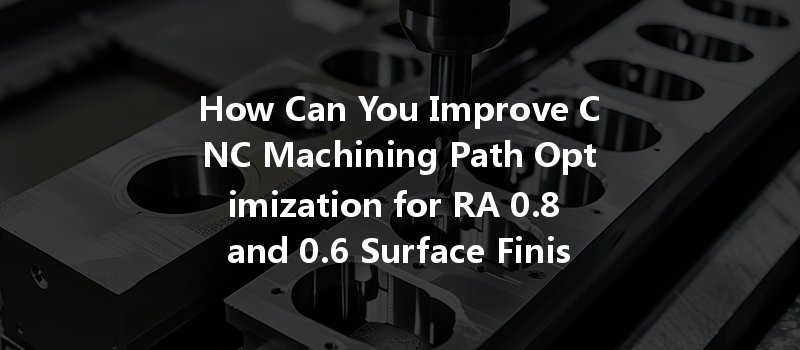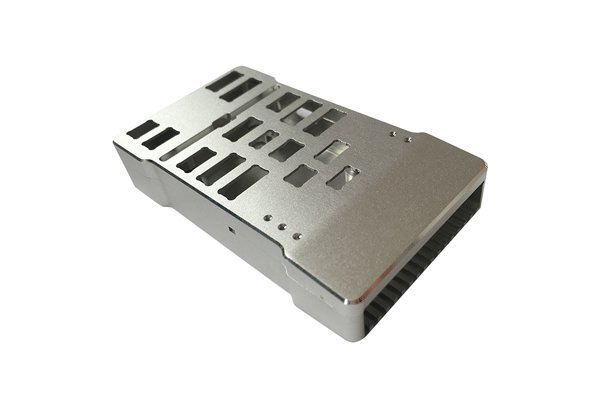In a world where precision is king, CNC (Computer Numerical Control) machining stands tall as a linchpin of modern manufacturing. But let’s be real; navigating the labyrinth of CNC machining can sometimes leave even the most seasoned professionals scratching their heads. Have you ever found yourself wondering why some machines produce flawless finishes while others leave you with surfaces that resemble a bumpy road? If so, you’re in the right place!
Today, we’re diving deep into a very crucial aspect of CNC machining—optimizing machining paths to achieve surface finishes of RA 0.8 and 0.
What Are RA 0.8 and RA 0.6 Surface Finishes?
First things first—let’s decode the jargon. “RA” stands for “Roughness Average,” a measurement used to quantify surface finishes. It’s like measuring how bumpy or smooth a road is. You wouldn’t want to go over a pothole-filled street in a Ferrari, right? Similarly, the smoother the surface finish, the better the performance and longevity of the finished part.
So, what do RA 0.8 and RA 0.6 mean? Think of them as the fine print on a recipe label:
Why Is Surface Finish Important?
Picture this: you’ve spent hours perfecting a component, only to see it underperform due to a subpar surface finish. It’s like baking a soufflé and having it fall flat—disappointing, to say the least! Surface finish directly affects factors like friction, wear, and even aesthetic appeal. A good finish reduces friction and increases wear resistance, which can dramatically extend the life of any component in a mechanical system.
The CNC Machining Process: A Quick Overview
For those who are newer to CNC machining, here’s a brief rundown of the process. It essentially involves three core steps:
Think of it as cooking: you first gather your ingredients (design), write down the recipe (programming), and then get cooking (machining)!
Factors Influencing Surface Finish
Okay, let’s roll up our sleeves and get into the nitty-gritty. Various elements impact your CNC machining surface finish. Recognizing these can be likened to knowing what spices to add for the perfect dish.
Your choice of tooling can make or break your surface finish. It’s like choosing the right paintbrush for a masterpiece. High-speed steel (HSS) tools leave a coarser finish, while carbide tools can produce smoother results. But remember, not all carbide tools are created equal!
The speed at which your tool engages with the material is crucial. It’s the difference between a high-speed blender and a sluggish one. Too slow, and you risk leaving a rough finish. Too fast? Well, you might just burn your material. Finding that sweet spot is key.
Also, consider the feed rate—the speed at which the machine moves the tool across the material. It’s like pacing yourself during a workout; you need to find that rhythm. Too fast could lead to chatter marks, while too slow may result in excessive wear on the tool.
Never underestimate the power of coolant! Think of coolant as water to a thirsty plant. It keeps your tools cool and reduces friction, resulting in a smoother finish.
Perhaps the most pivotal point we’ll discuss is tool path optimization. The paths your CNC machine takes to remove material can significantly impact surface finish.
How to Optimize CNC Machining Paths for RA 0.8 and RA 0.6 Finishes
Now that we’ve set the stage, let’s dive into the actual meat of the matter—how to perfect those tool paths for stunning finishes!
Not every tool path is created equal. For higher finishes, two popular paths are:

Which one do you think is better suited for achieving RA 0.6 finishes? Correct! Climb milling is the way to go.
Imagine stepping over a tiny stream versus a wide river. The smaller the step you take, the smoother your path will be. When programming your tool path, reducing the step-over distance will create finer finishes. For RA 0.8 and 0.6, consider a step-over of around 50% of the tool diameter.
This is where your machine turns into a ninja! Adaptive clearing strategies allow for variable engagement during machining. It focuses on maintaining optimal tool engagement, ensuring smoother cuts and reduced tool wear—resulting in those coveted surface finishes.
Think of finishing passes as icing on the cake. Once your rough cuts are complete, implementing a finishing pass with a smaller tool can help achieve a smoother surface. This method allows you to remove any procedural artifacts left by the primary tool.
Use softer materials? Then you can amp up the tool speed slightly, while also reducing the feed rate. Conversely, if you’re milling tougher materials, a lower speed with a higher feed rate may bring you closer to the finish you desire.
Let’s face it—quality doesn’t come cheap. But just like that trusty frying pan that’s been with you for decades, skilled manufacturers know that investing in good tools pays off in the long run. Opt for high-quality carbide or diamond-coated tools, as they yield a significantly better finish compared to lower-quality alternatives.
Consider yourself as a conductor of an orchestra during machining. Keep an eye on the sounds of the machine—any odd noises might indicate issues that could spoil your finish. Don’t be shy to pause and adjust if you feel things aren’t going as planned.
Testing and Measuring Surface Finish
How do you even know if you’ve achieved the surface quality you’re striving for? This is where testing comes into play!
This instrument will give you an accurate measurement of the surface roughness to know whether you hit that RA 0.8 or RA 0.6 mark. It’s akin to the right thermometer for a baker wanting to ensure their cake rises just right.
Sometimes a keen eye can work wonders. A simple visual check can help you catch irregularities that might not be picked up by fancy tools.
If you’re manufacturing parts for another company, feedback from end-users can guide you on whether you hit the mark. This earned insight can lead to continuous improvement—an endless cycle of learning and perfecting!
Common Mistakes to Avoid
Even seasoned pros slip up sometimes, and knowing what to steer clear of can save you a heap of trouble later.
Conclusion: Your Path to CNC Perfection
There you have it—a comprehensive guide to mastering CNC tool path optimization to achieve those stellar RA 0.8 and RA 0.6 surface finishes. Who knew the journey through the convoluted world of machining could be so enlightening, right?
As you embark on optimizing your CNC paths, remember that every mistake is a stepping stone toward mastery. With patience and a willingness to learn, you’ll soon find yourself producing parts with finishes that shine brighter than a diamond!
Happy machining, my friends, and may your paths always lead to greater smoothness! If you’ve found this article helpful, feel free to share it with your fellow machinists, as knowledge is best when shared!






